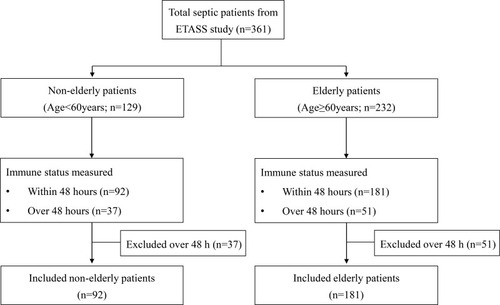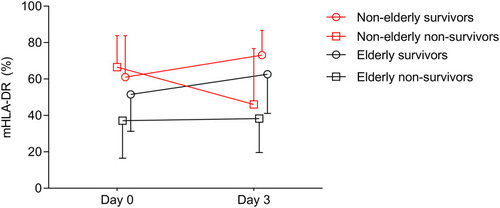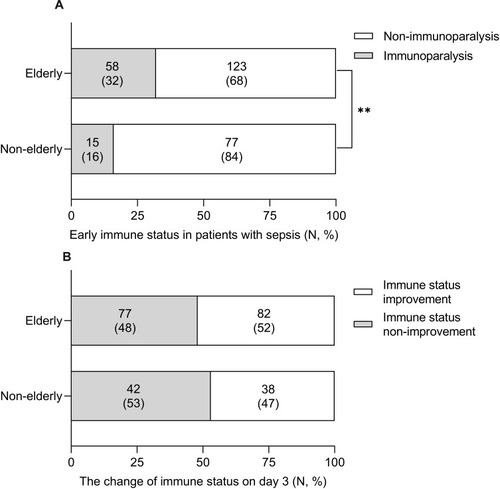Figures & data
Table 1 Baseline Clinical Characteristics of Adult Patients with Sepsis
Figure 1 Flow chart. In this study, 181 elderly and 92 non-elderly septic patients whose mHLA-DR was obtained within 48 hours after onset of sepsis were enrolled.

Table 2 Outcomes of Adult Patients with Sepsis
Figure 2 The changes of mHLA-DR in survivors and non-survivors in different age. The mHLA-DR in elderly non-survivors was lower than that of survivors on day 0 and day 3. However, the mHLA-DR of non-elderly non-survivors was similar to that of survivors on day 0, but mHLA-DR decreased rapidly in non-elderly non-survivors on day 3.

Figure 3 Early immune status and change of immune status in patients with sepsis. (A) The percentage of early immunoparalysis in elderly patients was twice of that of non-elderly patients (32% vs 16%, p=0.008). (B) About half of elderly (82/159, 52%) and non-elderly (38/80, 47%) patients had immune status improvement on day 3 (**p value <0.01).

Figure 4 Immune status and hospital mortality. (A) The hospital mortality of immunoparalysis elderly patients were higher than that of non-immunoparalysis ones (31/58 vs 40/123), but there was no significant difference in hospital mortality in the non-elderly between immunoparalysis and non-immunoparalysis (5/15 vs 20/77). (B) Septic patients with immune status improvement on day 3 had lower hospital mortality than patients with non-improvement in both the elderly and the non-elderly groups (*p value <0.05; **p value <0.01).

Table 3 Early Immunoparalysis Was Associated with Increased Hospital Mortality in Elderly Patients
